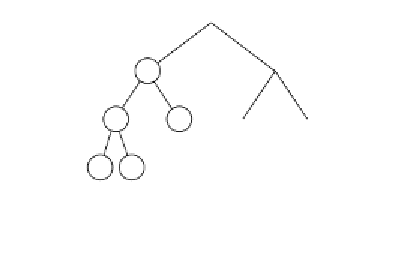Java Reference
In-Depth Information
figure 21.26
Heap after the first
deleteMax operation
59
53
58
26
41
36
31
16
21
97
59 53 58 26 41 36 31 16 21 97
J111213
0
1
2
3
4
5
6
7
8
9
10 11 12 13
Figure 21.27 shows that after a second
deleteMax
, 16 becomes the last
element. Now only eight items remain in the heap. The maximum element
removed, 59, is placed in the dead spot of the array. After seven more
deleteMax
operations, the heap represents only one element, but the elements
left in the array will be sorted in increasing order.
Implementation of the heapsort operation is simple because it basically
follows the heap operation. There are three minor differences between the two
operations. First, because we are using a max heap, we need to reverse the
logic of the comparisons from > to <. Second, we can no longer assume that
there is a sentinel position 0. The reason is that all our other sorting algorithms
store data at position 0, and we must assume that
heapSort
is no different.
Although the sentinel is not needed anyway (there are no percolate up opera-
tions), its absence affects calculations of the child and parent. That is, for a
node in position
i,
the parent is in position , the left child is in posi-
tion , and the right child is next to the left child. Third,
percDown
needs
to be informed of the current heap size (which is lowered by 1 in each itera-
tion of
deleteMax
). The implementation of
percDown
is left for you to do as
Minor changes are
required for heap-
sort because the
root is stored in
position 0.
(
i
-
1
)
⁄
2
2
i
+
1
figure 21.27
Heap after the second
deleteMax operation
58
53
36
26
41
21
31
16
59
97
58 53 36 26 41 21 31 16 59 97
J111213
0
1
2
3
4
5
6
7
8
9
10 11 12 13











Search WWH ::

Custom Search